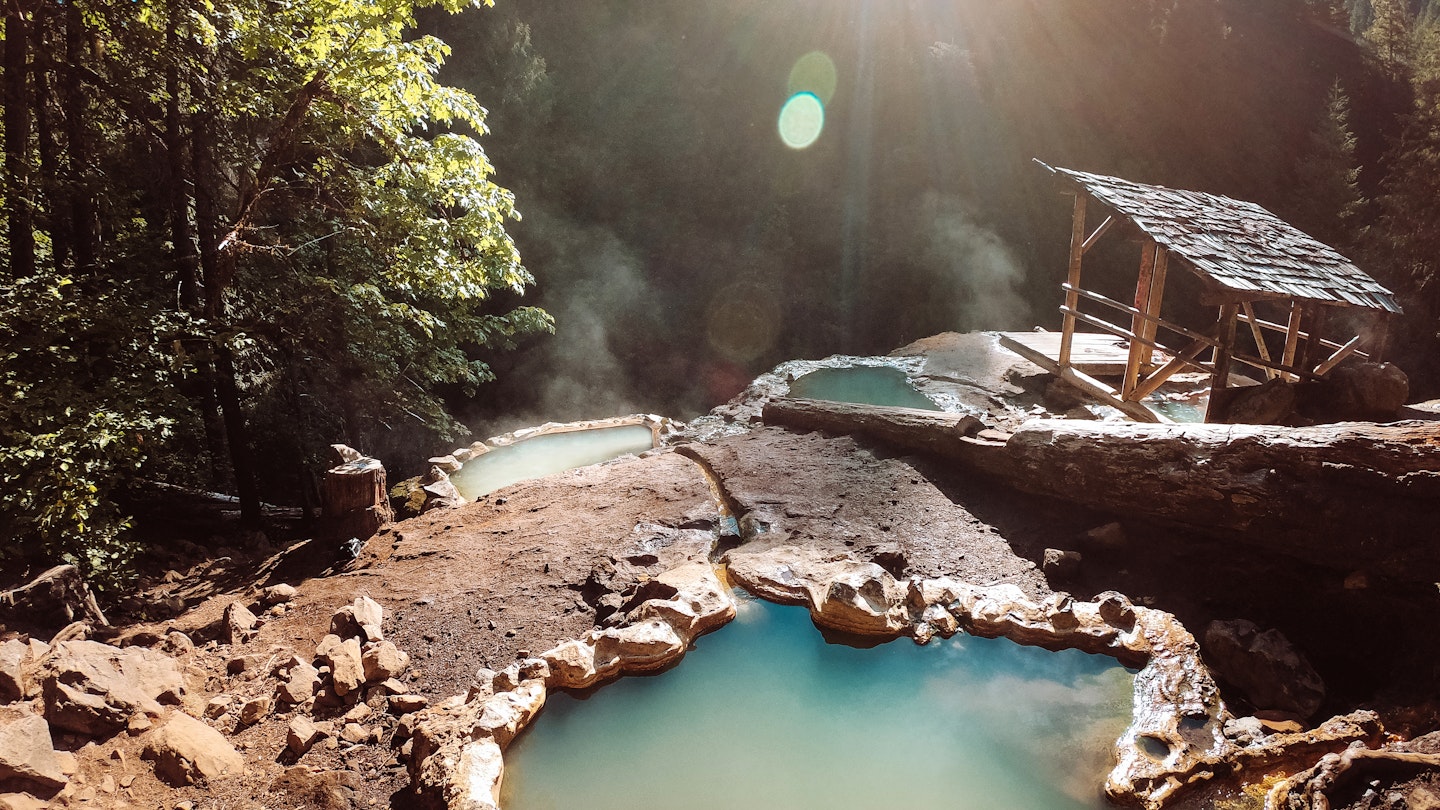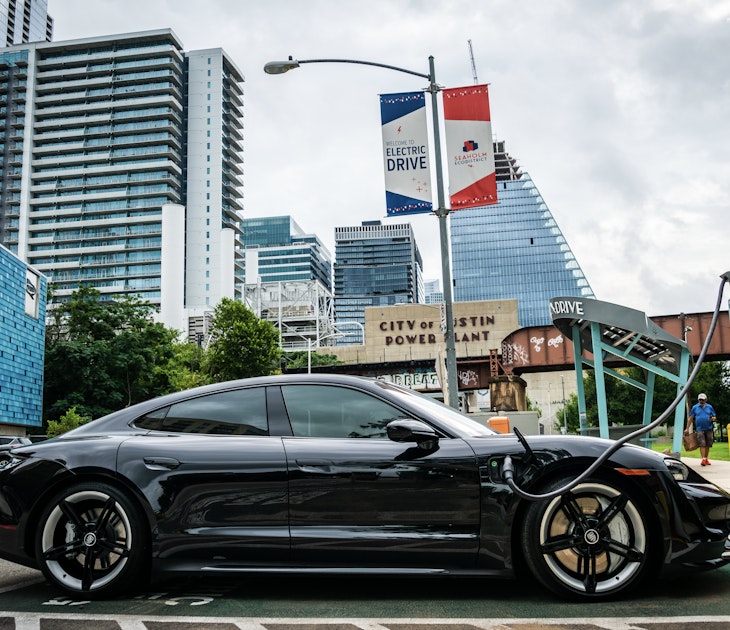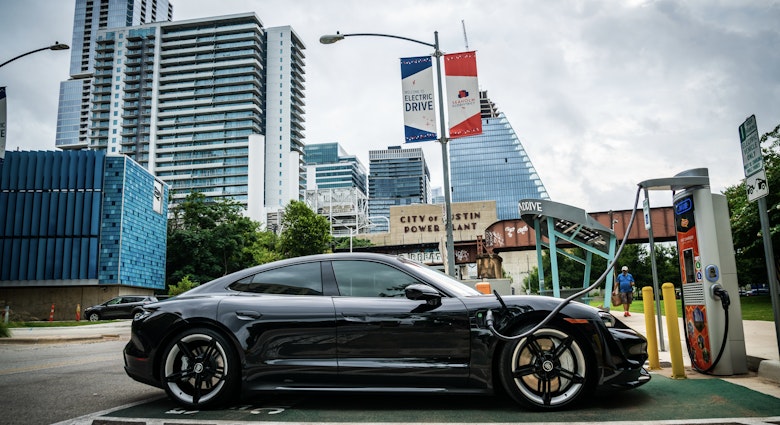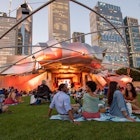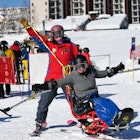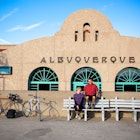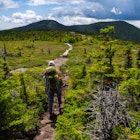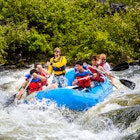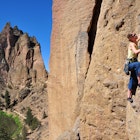Aaahh – there’s nothing quite so restful as immersing one’s naked body in a pool of water so warm, it leaves the skin soft and smooth, stimulates circulation and offers relief from arthritis and whatever else ails you.
The geothermal springs of Oregon, both in the Cascade Range and in older aquifers in the eastern basin country, have the state’s active volcanic heritage to thank for their existence. They also offer ample opportunities for visitors to take the plunge, staving off the damp chill of the Pacific Northwest in luxuriously warm waters that seem to bubble up out of nowhere.

Why Oregon is such a hotbed for hot springs
The springs’ healing qualities stem from the dissolved minerals they absorb during thousands of years underground, especially silica and sulfate. It’s the latter that imbues many springs with a ‘rotten eggs’ aroma – but don’t worry, you’ll get used to it. Hot spring waters also typically contain such elements as potassium chloride, sodium, magnesium, iron, calcium and lithium. They may bubble in subterranean chambers at temperatures of 300 to 400 degrees Fahrenheit, and they may still remain a scorching 190 degrees in ‘cooler’ rock near the earth’s surface.
Of course, Native Americans knew about Oregon hot springs for thousands of years before white Europeans arrived. Ancient arrowheads still turn up on nearby paths, and tradition holds tribes sometimes gathered at springs for powwows, laying their rivalries aside. These days, however, you'll find a wide range of hot springs experiences in Oregon, some free and some that come with a fee.
The web site Soak Oregon lists four dozen hot springs across the state – some of them commercially operated, others within designated parks, still others are entirely primitive and remote. Where they have been developed, water is brought to the surface by geothermal wells fitted with circulating heat exchangers that cool it to between 100 and 110 degrees. At backcountry springs, you’ll want to indulge at your own risk. We rounded up six of the best, however, making it easy to find a spot to indulge in these natural perks of the Pacific Northwest.

Breitenbush Hot Springs Retreat
One well-known location — now known as the Breitenbush Hot Springs Retreat and Conference Center — is well-known throughout the Pacific Northwest not only for its healing waters, but also for its wellness and spirituality retreats. Located near the small town of Detroit in the heart of the Cascades, Breitenbush sits on the banks of the Breitenbush River at the edge of the Mount Jefferson Wilderness Area. It’s not a fancy resort, nor does it pretend to be. Many of its structures date from the 1920s.
If you venture to Breitenbush in summer, you might study yoga, meditation, shamanism or reiki bodywork. You might also attend workshops on spiritual healing, holistic eating, color theory or chakra awareness. In autumn, offerings include ayurvedic and herbal medicine, rhythmic energy work, tarot readings, creative writing and sacred song. Nearly every weekend, year-round, some type of workshop is scheduled.
There is no guest internet or cellphone service, so unplugging is a must. Despite the disconnect, Breitenbush plays host to about 20,000 guests a year, split evenly between those on personal retreats and those attending workshops. The all-inclusive rate includes a private cabin and three meals a day from a vegetarian buffet.
Overnight guests have full soaking privileges in the steam sauna and hot pools, where nudity is the norm. There is something liberating about being naked with strangers in this environment. Bathers relax their reserve, quietly disrobe, hang their clothing on pegs and slowly slip into the steaming water with others dressed exactly like them.
There are two sets of pools at Breitenbush. On the river plain are four tiled hot tubs oriented to the cardinal directions, all of which share a single platform. On an open hillside above the main lodge are three rock-lined pools classified as Sacred Pools. The particularly beautiful pool furthest from the lodge is designated as the Silent Pool, where conversation is discouraged to allow bathers to meditate.
A small and ramshackle sauna house built of cedar planks is another popular haven. It's not a dry sauna but a steam-heated one, and its moist warmth sends many bathers dashing for the cool plunge in an old claw-foot bathtub just outside.
NOTE: Due to the Lionshead wildfire, which claimed a significant number of buildings on the property, Breitenbush Hot Springs is closed until 2021 as of September 16, 2020.
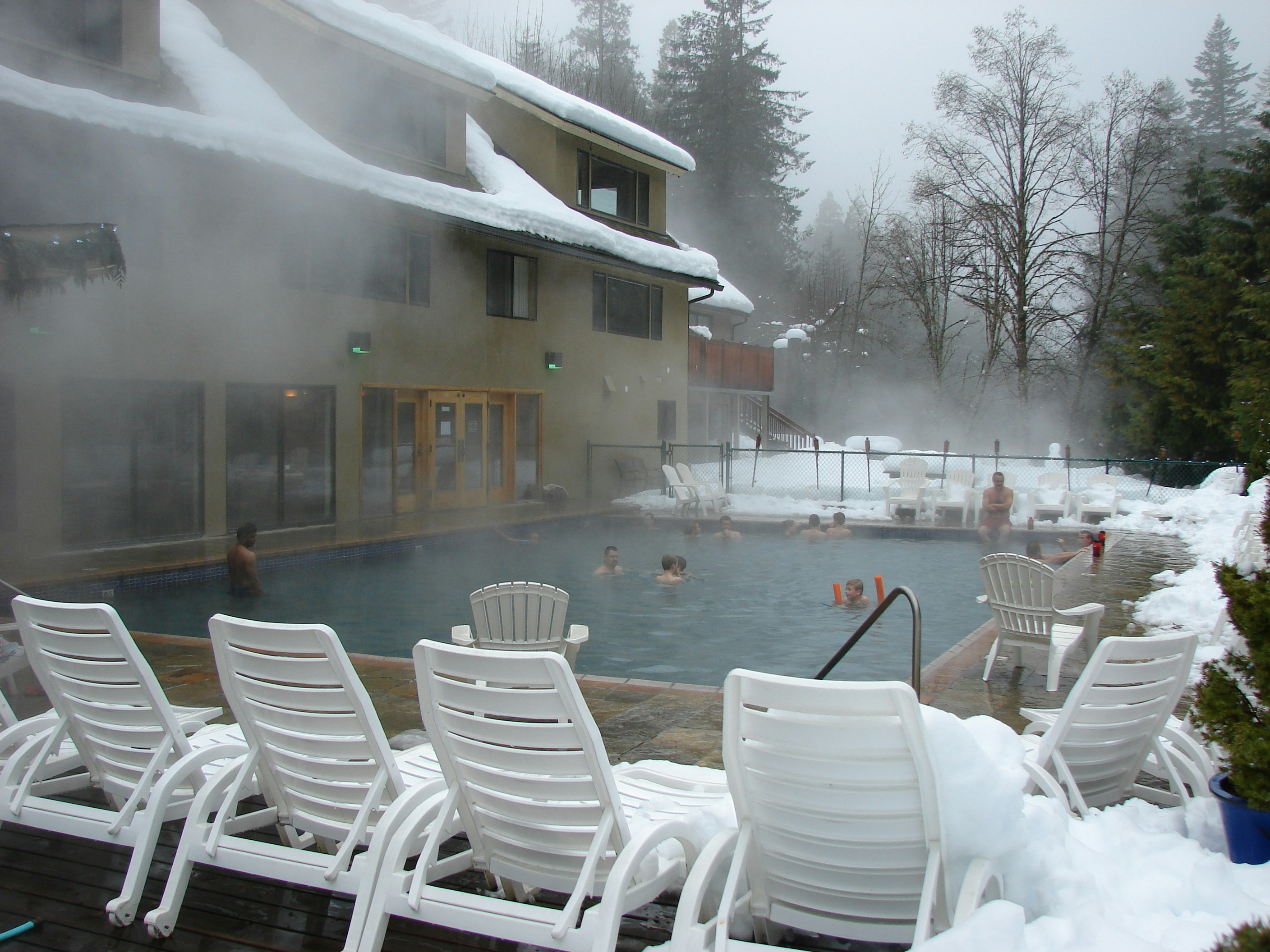
Belknap Hot Springs Resort
Also in the central Cascades is the Belknap Hot Springs Resort, on the McKenzie River just off State Highway 126. For thousands of years, Native Americans used these waters for sacred, healing sweat lodge ceremonies. European settlers quickly caught when they arrived, and there has been a resort here since the 1870s. The two pools at Belknap are fed by waters pouring from a riverside fissure at a rate of 60 gallons per minute. The lower pool, which welcomes casual drop-ins, is always the more crowded; the upper pool is reserved for overnight guests. There’s a lot to enjoy when you aren't soaking, too – beautiful gardens, including several ponds and a Japanese tea house, have been laid out across the river from the handsome central lodge.
Cougar / Terwilliger Hot Springs
Nowhere near as formal are the Cougar (or Terwilliger) Hot Springs, in Willamette National Forest just off the Aufderheide Highway near Blue River. Decidedly clothing-optional, these five rock-walled pools (each slightly cooler than the next, from 112 degrees to 90 degrees) are fed by springs flowing from a small cave in a ravine surrounded by old-growth firs. It’s a short quarter-of-a-mile hike to reach the springs from the parking area, and only fifty miles from quirky Eugene, Oregon in the heart of Willamette Valley wine country, where you can easily balance out your rustic soak with a well-organized wine tour.
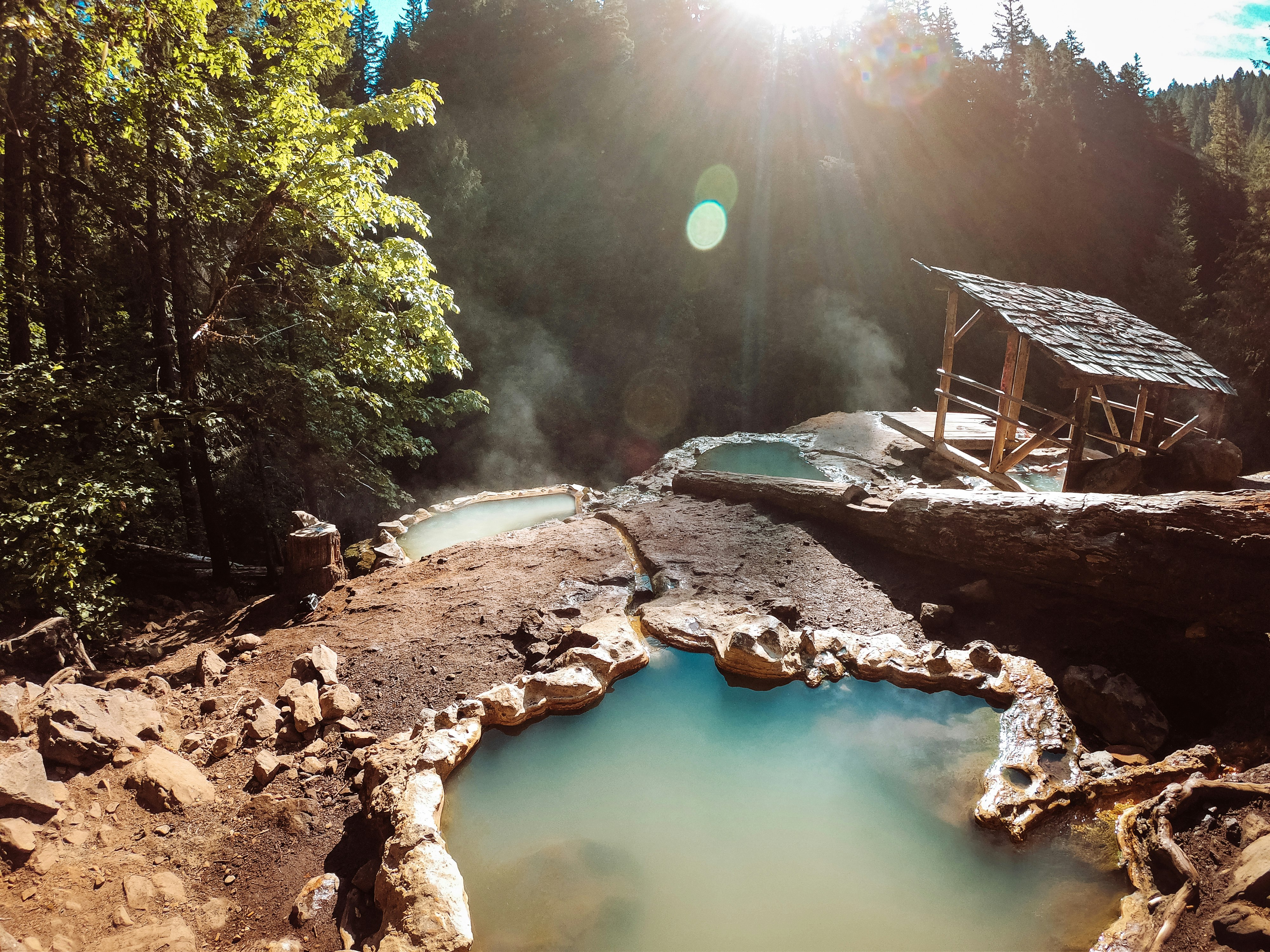
Umpqua / Toketee Hot Springs
At a similarly primitive national forest site are the Umpqua (or Toketee) Hot Springs in the Southern Oregon Cascades, less than an hour’s drive from Crater Lake National Park. Three pools, the hottest of them 108 degrees, flow from a mineral deposit with a stunning view of the North Umpqua River below. Nakedness is the norm here, though no one will judge if you stay clothed, either. For years camping was the norm here, too, at the trailhead that precedes a steep hike up to the springs. Technically that’s no longer allowed thanks to how popular Umpqua has become with the Instagram set, but you’ll still find vanlife enthusiasts and small RVs boondocking on the down-low.

Hot Lake Springs
Hot Lake Springs, southeast of La Grande, release 2½ million gallons of 208-degree water daily into a steaming eight-acre lake. Well known to the Nez Perce, the location became a thriving spa community and sanatorium in the early 20th century. Rich in sulfur, sodium, potassium chloride, silicon oxide, calcium, fluoride and magnesium, the waters were used to treat arthritis, tuberculosis, alcoholism and syphilis. A bronze sculptor bought and restored the site between 2003 and 2010. Guests who soak in the springs today may also enjoy a 22-room bed-and-breakfast inn, a charming restaurant and gardens – though regular visitors say it’s haunted.
Summer Lake Hot Springs
Summer Lake Hot Springs nestle at the southeast end of vast, alkaline Summer Lake off Oregon’s ‘Outback Highway.’ The small resort here is especially popular among Bend folk traveling to or from Burning Man. Though far from fancy, the facilities include a large indoor pool and geothermally heated cabins with natural rock pools, as well as a campground and RV hookups. Green building and design practices offer visitors a sense of living in balance with the surrounding desert environment.
